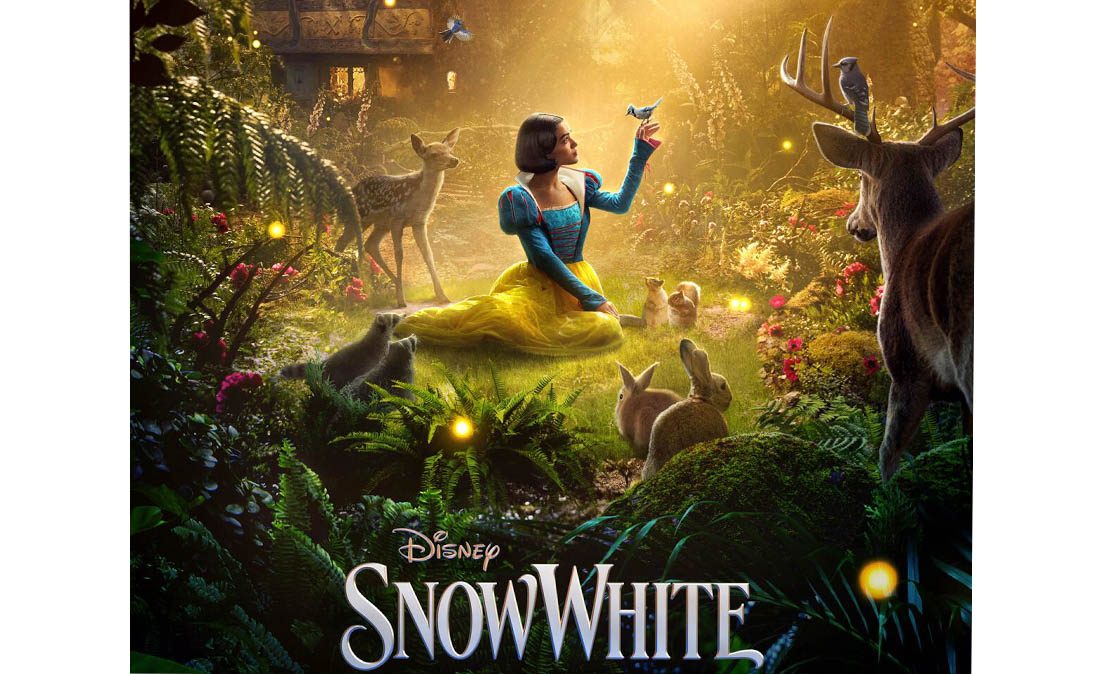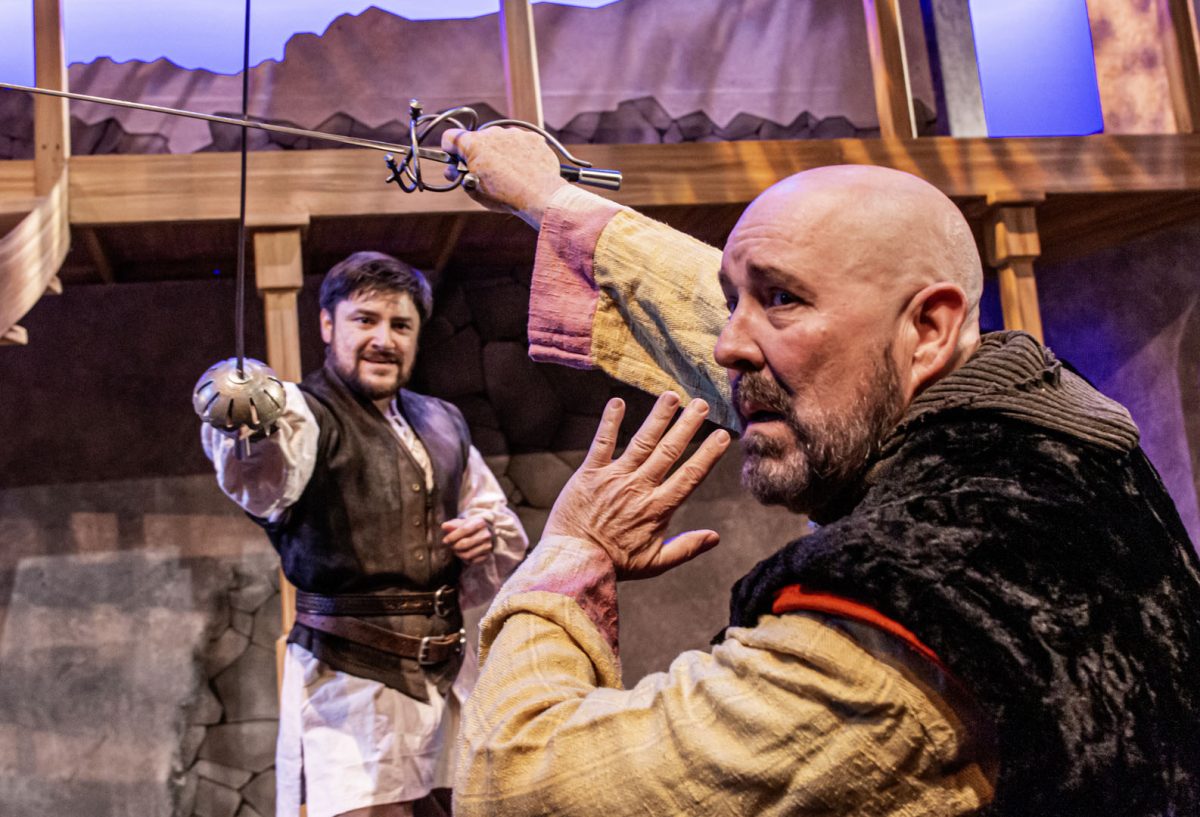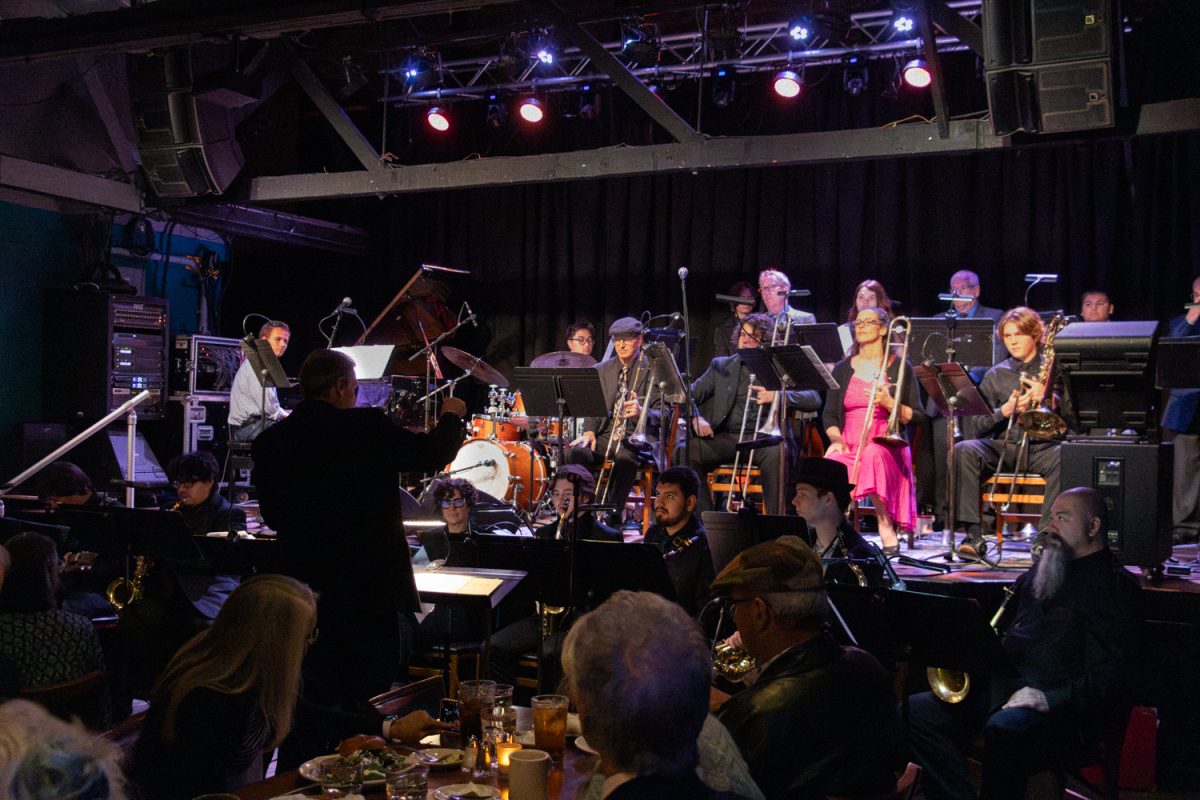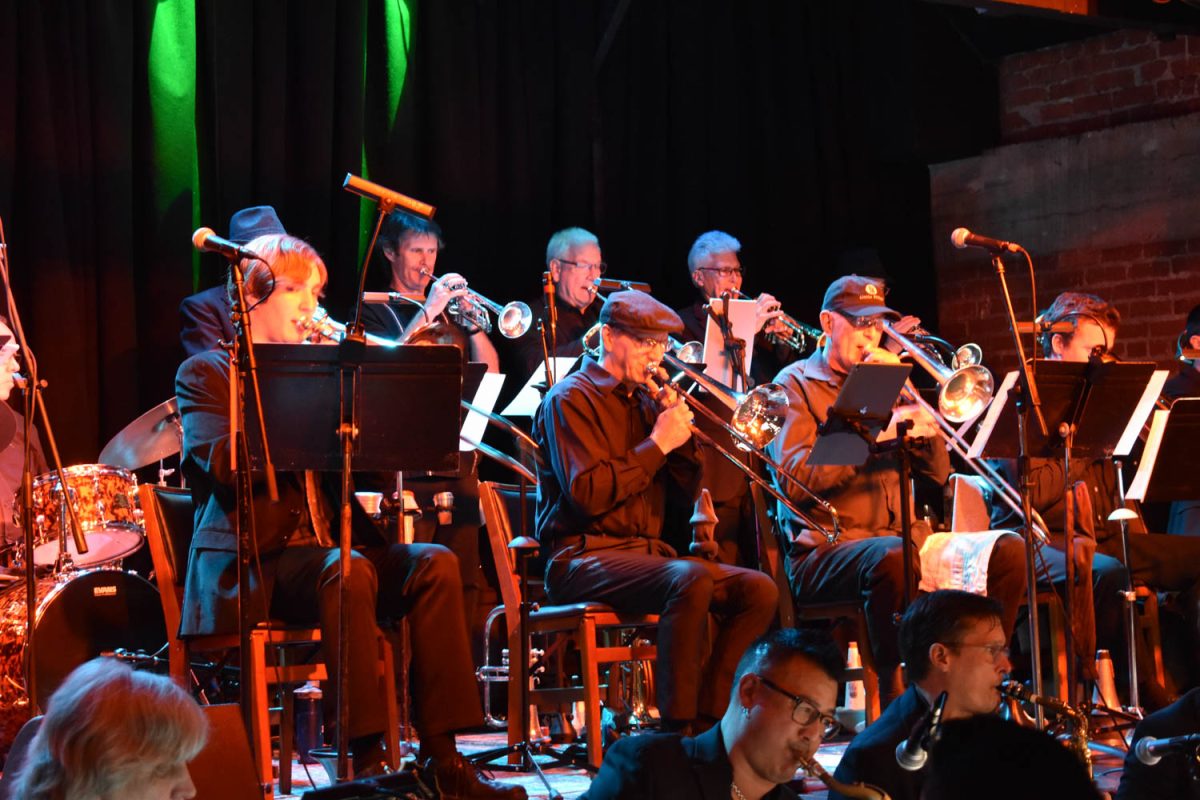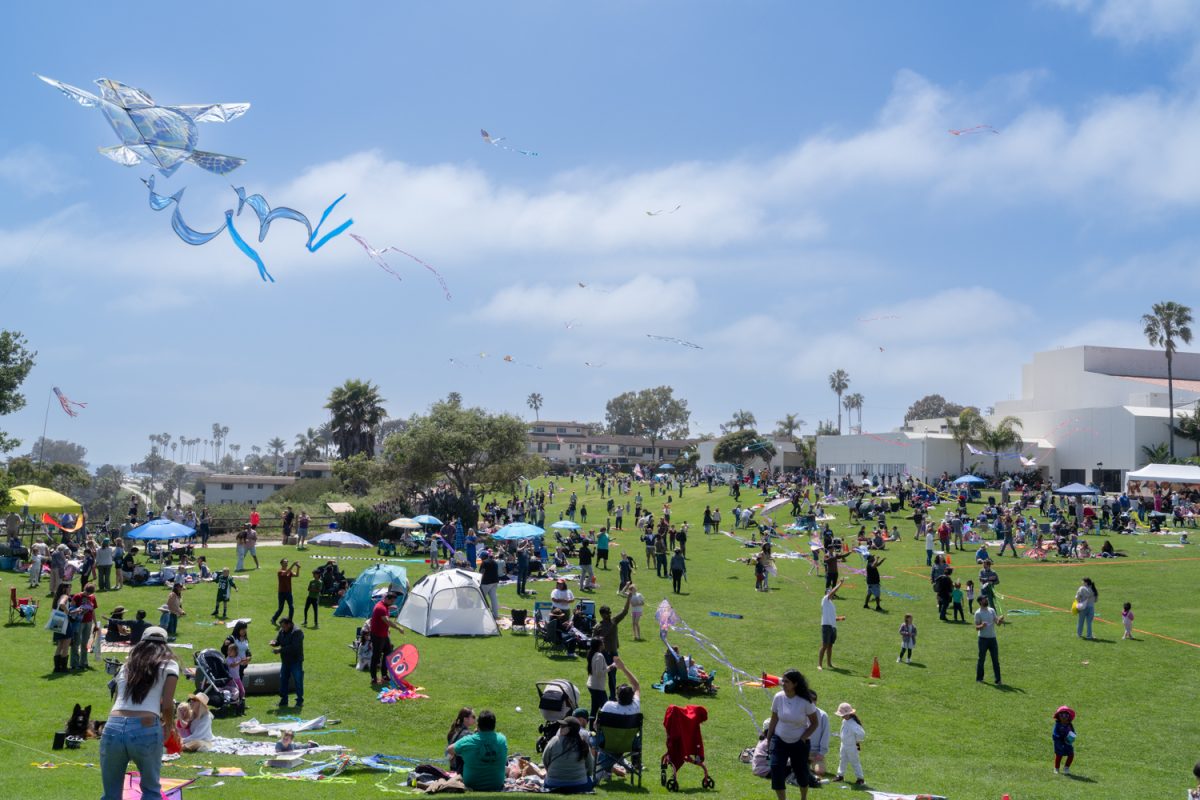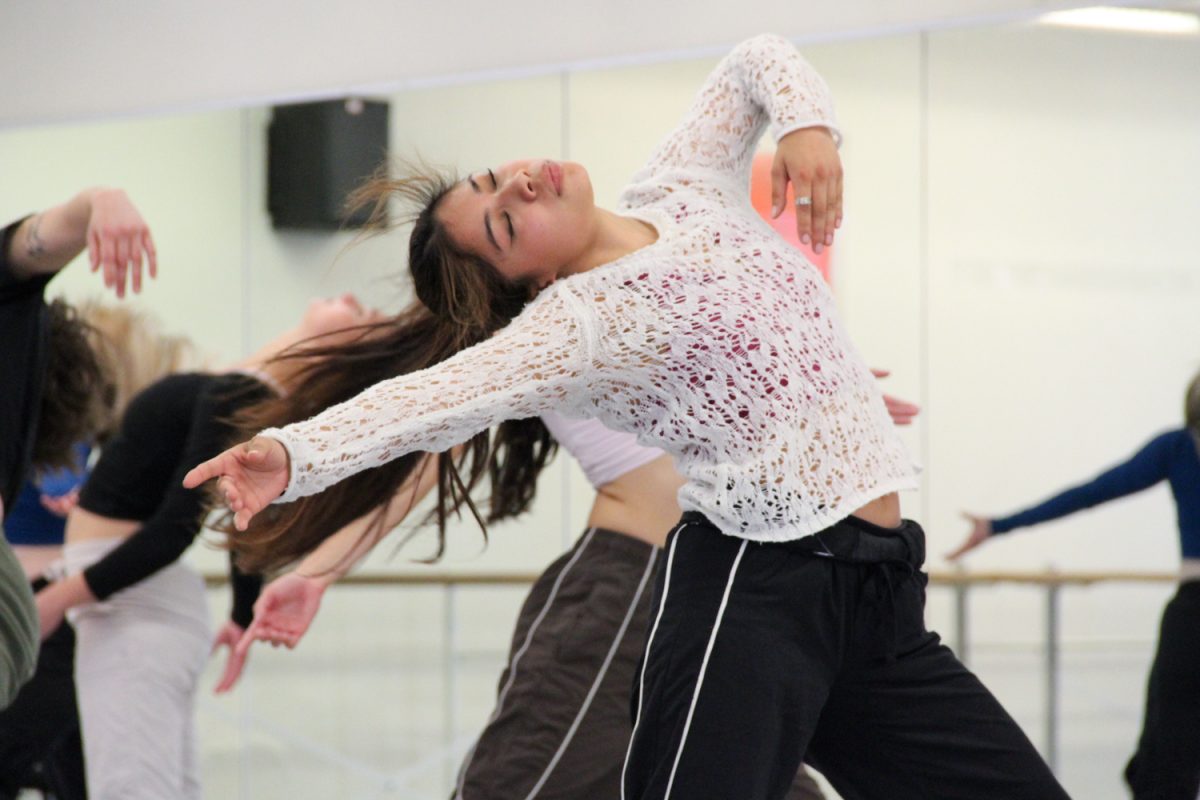Fluttering cotton jerseys and stiff satin silk alike adorned the bodies of the men and women who ambled to their seats in the Granada Theatre on Sunday, Oct. 16, as they chatted quietly but amicably with their neighbors.
The stage was set unusually—the curtains were drawn, revealing the orchestra sitting on the upper half of the stage with a robed choir behind them. A thin, dark screen separated them from the lower portion of the stage. It was blank and there were no props set out.
The conductor’s arrival did not stop the muted chatter, nor did the tune-ups each section in the orchestra performed.
Unexpectedly, the national anthem began to play. As the choir joined, so did audience members, hastening to stand.
The Granada Theatre’s showing of Carl Orff’s magnum opus, Carmina Burana, as performed by the Santa Barbara Symphony and State Street Ballet, was a massive collaboration. The Santa Barbara Choral Society, the Music Academy of the West’s Children’s Chorus, and City College’s own Quire of Voyces all joined to open the performance season.
Before the featured symphony, the State Street Ballet performed classical choreography to Gabriel Fauré’s Pavane. Three pairs of soloists, the women en pointe, twisted and turned through ripples of partner work that moved the viewer’s eye from one set of dancers to the next. As soon as the dancers left the stage, the orchestra exploded into the Bachannale from Camille Saint-Saëns’ Samson and Delilah.
The feature piece was depicted in three acts, bookended by the famous “Fortuna, Imperatrix Mundi.” As named in the song, the choreography centered on a woman depicting fortune as she rules over the world, unmoved as the people beneath her cycle through their lives according to her whims. Her attendants, in an interesting turn, wore the regalia of Roman Catholic bishops, a possible reference to the many clerics suspected to have authored the poems upon which the entire symphony is based.
Each of the three acts depicted a cycle, cleverly interweaving the story of a pair of lovers with the turning of seasons and the lives of medieval peasants and nobility alike. The contemporary choreography at some points invoked the cheeky playfulness of George Balanchine’s Rubies, and at other times seemed to pull from Martha Graham’s modern techniques and Pina Bausch’s unveiled emotional direction. Clear references were consistently made to various European folk dances.
The dancers were joined onstage by various soloists. Jana McIntyre, a soprano, brought the children of the Music Academy’s Sing! program to lead them in a rendition of “Tempus est Iocundum” as baritone Valdis Jansons sang opposite her.
While adding choreography as a visual component is both imaginative and instructive, the vocal and orchestral arrangements of the Symphony are highly derivative of the London Symphony’s performance. With less funding, less training, less equipment, and a smaller venue, the musical production could have easily felt like a lesser copy. Despite this, it did not.
The various choral groups at the Granada had an edge. They, unlike the Englishmen, were capable of properly pronouncing Latin.



![Malia Hubbard admires the ceramic pieces created by students in Art 150, "Fundamentals of Ceramics" on April 10 in Santa Barbara, Calif. "I think [the gallery] is absolutely fabulous," Hubbard said. "Being able to see students work [is] so amazing."](https://www.thechannels.org/wp-content/uploads/2025/04/MGSStudentShow-1-1200x800.jpg)


